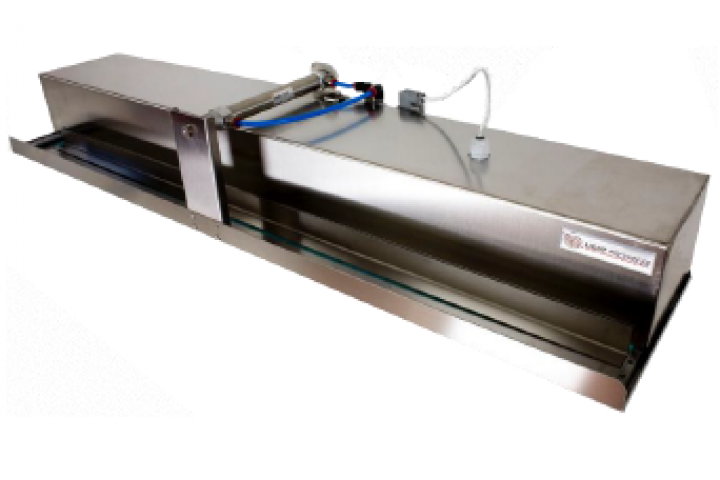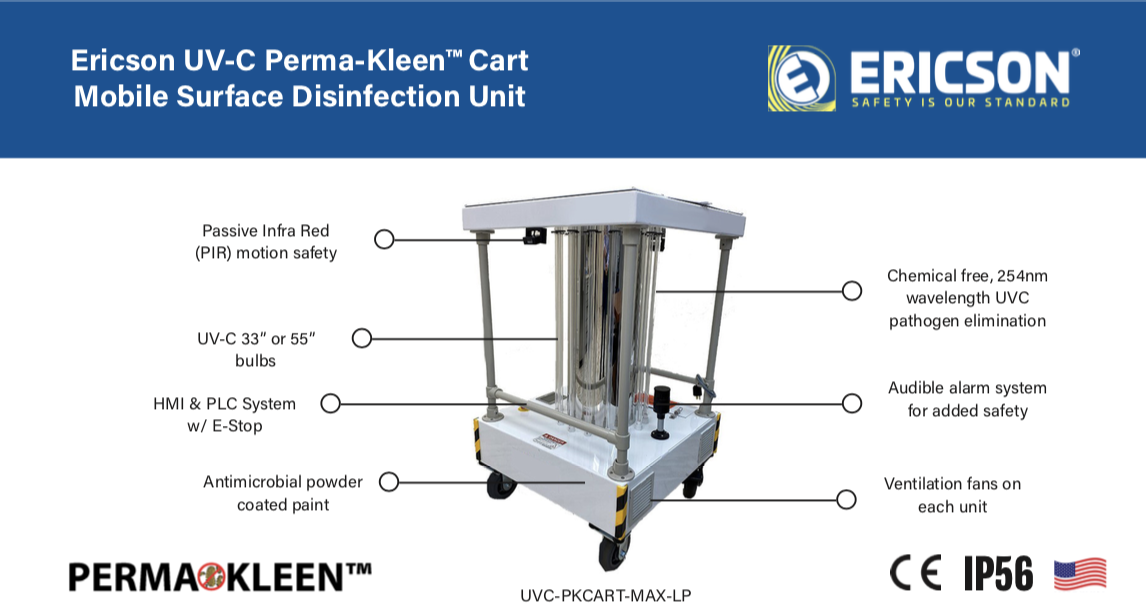Unleashing the Potential of Far UVC Light: Safeguarding Public Spaces
In an age where public health and safety and security have come to be critical, the potential of much UVC light to safeguard public areas is a topic of expanding interest. We will certainly explore the future ramifications of much UVC light in shaping public wellness and safety, leaving no question that this emerging innovation is positioned to change the method we guard our public areas.
What Is Far UVC Light?
Far UVC light refers to a particular wavelength of ultraviolet light that has been discovered to possess special properties in regards to its capacity to effectively eliminate virus while being secure for human direct exposure. Unlike standard UV light, which can be dangerous to human skin and eyes, much UVC light operates at a wavelength of around 222 nanometers, which is unable to penetrate the outer layer of the skin or the tear layer of the eye.
Study has actually revealed that far UVC light is capable of suspending a large range of microorganisms, including germs, fungi, and viruses. This is due to its capability to penetrate the outer layers of these microbes and harm their DNA or RNA, making them unable to trigger and replicate infection. In addition, due to the fact that far UVC light is unable to get to the living cells in the skin and eyes, it does not cause any kind of harm to human cells.
The distinct residential properties of far UVC light make it an excellent tool for sanitation in public spaces. It can be securely used in occupied locations, such as healthcare facilities, colleges, flight terminals, and public transport, to continuously sanitize air and surface areas, decreasing the threat of transmission of infectious illness. Additionally, its non-toxic nature and absence of recurring chemicals make it an environmentally pleasant choice to conventional sanitation approaches.
How Does Far UVC Light Safeguard Public Spaces?
Public areas can be successfully safeguarded by using the one-of-a-kind residential or commercial properties of much UVC light in order to continually disinfect air and surfaces, decreasing the danger of transmission of transmittable diseases. Far UVC light, with a wavelength range of 207 to 222 nanometers, has been verified to be reliable in eliminating microorganisms, infections, and other pathogens without hurting human skin or eyes. This makes it an encouraging device for developing more secure environments in public spaces such as medical facilities, workplaces, airports, and schools.
One of the crucial benefits of far UVC light is its ability to be used continuously in busy rooms. far-uvc. Unlike standard UV germicidal lamps, which send out UVC light at a wavelength of 254 nanometers that can be harmful to human beings, much UVC light can be utilized securely around people. This permits consistent sanitation in areas where people collect, assisting to decrease the spread of infectious conditions
Far UVC light can be incorporated into existing air flow systems or installed as standalone tools in public areas. When used in air sanitation, far UVC light can target air-borne pathogens, consisting of viruses, as they distribute in the air.
Applications of Far UVC Light in Public Spaces

Another application of far UVC light is in the disinfection of surfaces. Far UVC lamps can be strategically put in public areas, such as health centers, colleges, workplaces, and transport centers, to continually decontaminate regularly touched surface areas. This consists of doorknobs, hand rails, lift switches, and counter tops. By successfully eliminating microorganisms on these surfaces, the danger of transmission through contact is considerably decreased.
Additionally, far UVC light can be used in the sanitation of water. By revealing water to far UVC light, damaging bacteria present in the water can be counteracted, making it secure for public usage. This application is particularly useful in public water fountains, pool, and leisure water facilities.
Benefits of Far UVC Light Over Standard Sanitation Methods
With its varied functional applications, much UVC light offers numerous advantages over traditional sanitation techniques in public spaces. One substantial advantage is its capacity to supply continuous sanitation without the requirement for human treatment. Unlike handbook cleansing techniques, such as cleaning surfaces with anti-bacterial services or making use of UV lamps run by workers, much UVC light can be set up in public spaces to continuously decontaminate the air and surfaces without the demand for constant surveillance or manpower.
One more benefit of far UVC light is its performance against a large range of microorganisms. Traditional disinfection approaches may not constantly be effective against all sorts of microorganisms, leaving some locations vulnerable to contamination. Far UVC light, on the various other hand, has actually been shown to be reliable versus a variety of microorganisms, consisting of fungis, microorganisms, and viruses, making it a reputable remedy for comprehensive disinfection in public areas.
In addition, far UVC light is a eco pleasant and safe method of disinfection. Unlike chemical disinfectants, which may position health and wellness risks and leave unsafe residues, far UVC light does not create any type of unsafe byproducts or deposits. It is secure for individuals to be exposed to and does not harm the environment, making it a sustainable choice for disinfection in public spaces.

The Future of Far UVC Light in Public Health And Wellness and Security
As the need for sustainable and efficient disinfection methods remains to expand, the future of much UVC light in public health and wellness and security looks appealing. Far UVC light has actually shown terrific prospective in efficiently killing pathogens, consisting of infections and germs, without damaging human skin or Discover More eyes. This makes it a secure and trusted choice for continuous sanitation in numerous public areas.
One of the key benefits of far UVC light is its ability to inactivate air-borne microorganisms (far-uvc). By installing much UVC lighting fixtures in healthcare facilities, institutions, flight terminals, and other Check Out Your URL jampacked locations, we can considerably decrease the threat of illness transmission through the air. This has actually ended up being even much more essential in light of current break outs, such as the COVID-19 pandemic
Additionally, far UVC light can be incorporated into existing air flow systems, enabling constant sanitation of the air as it distributes. This implies that also in spaces with high occupancy prices, the risk of infection can be lowered, offering a more secure environment for every person.
Along with air sanitation, far UVC light can likewise be used to sterilize surface areas. By integrating far UVC light modern technology into self-governing robotics or handheld gadgets, we can effectively decontaminate commonly touched surfaces, such as doorknobs, lift buttons, and handrails.
Verdict
Finally, far UVC light has the possible to transform public health and wellness and safety and security by efficiently decontaminating public spaces. Its capability to eliminate virus without harm to people makes it discover this an encouraging solution for avoiding the spread of infectious illness. With its countless advantages over conventional sanitation approaches, such as no chemical deposit and continuous disinfection, far UVC light holds wonderful promise for future applications in protecting public areas.
In a period where public wellness and safety have become critical, the capacity of much UVC light to secure public rooms is a subject of expanding passion. We will certainly discover the future implications of much UVC light in forming public wellness and safety and security, leaving no uncertainty that this arising technology is poised to revolutionize the way we safeguard our public spaces.
Unlike conventional UV germicidal lamps, which produce UVC light at a wavelength of 254 nanometers that can be damaging to people, far UVC light can be utilized safely around people - far-uvc.In conclusion, much UVC light has the possible to change public health and safety by effectively disinfecting public spaces. With its numerous benefits over typical sanitation approaches, such as no chemical deposit and continual sanitation, much UVC light holds excellent guarantee for future applications in protecting public spaces
Comments on “Far-UVC UV Sanitizers: Reinventing Sanitation Requirements for a Safer Setting”